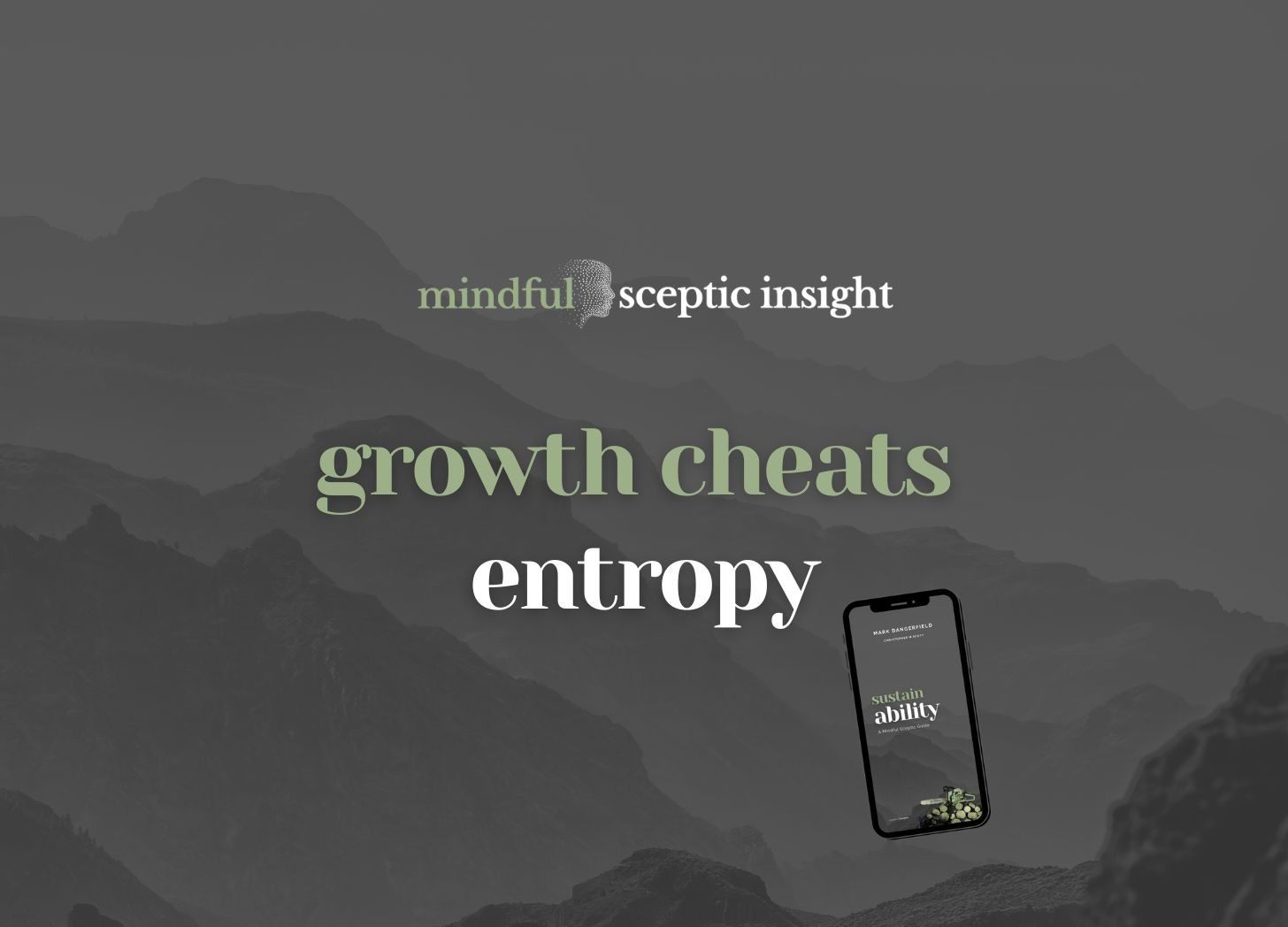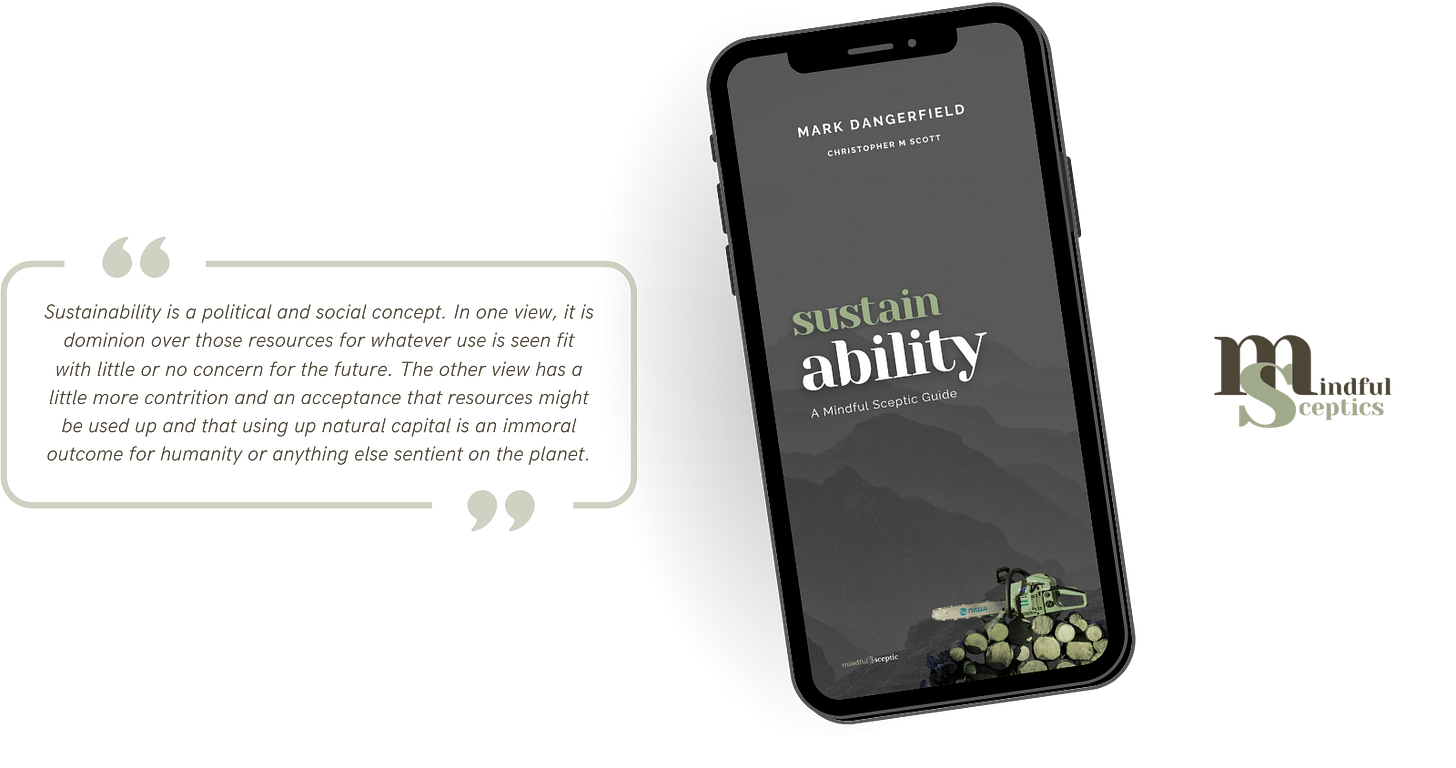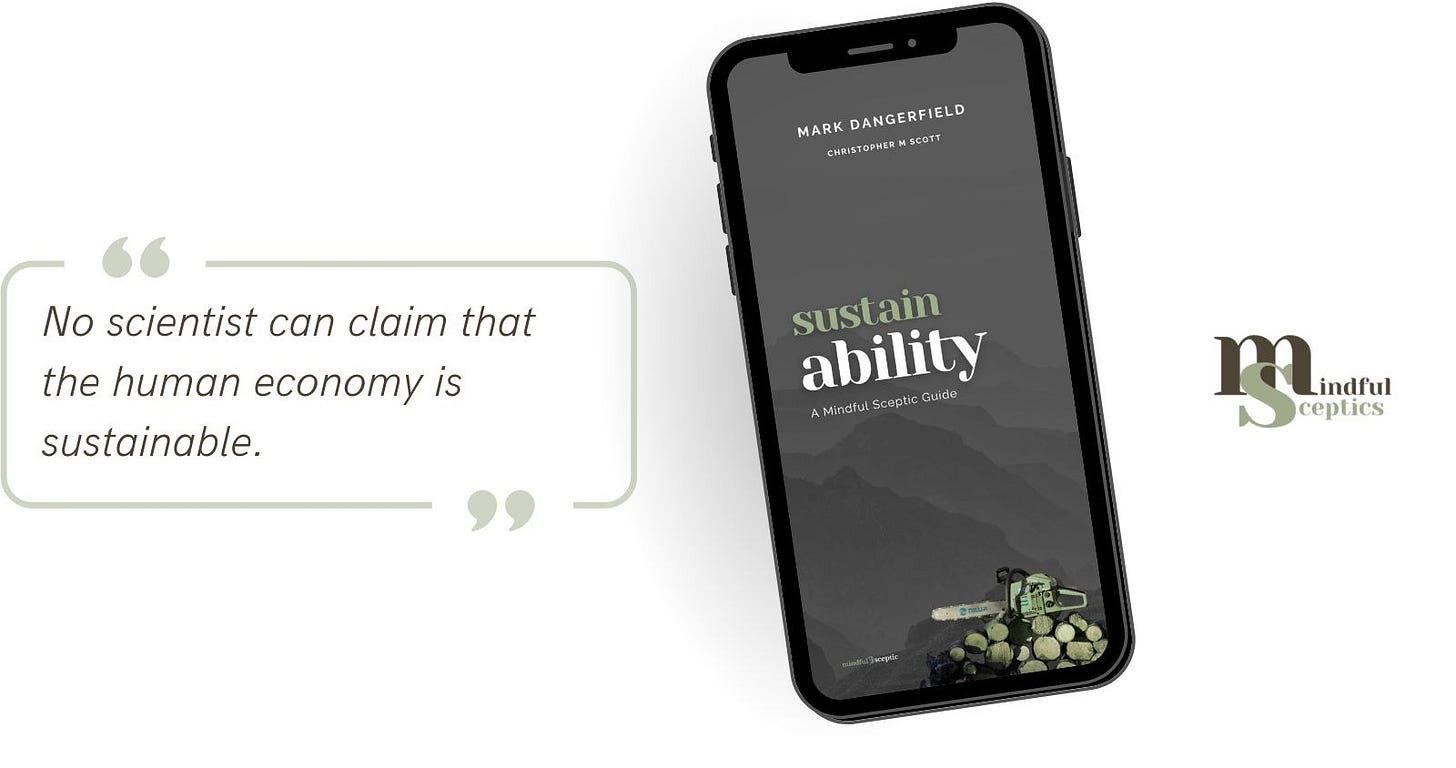Core Idea
Every morning, billions of humans wake up and participate in an extraordinary thermodynamic experiment. We consume breakfast, drive to work, build infrastructure, manufacture goods, and somehow maintain the complex organisation we call civilisation.
We call this “economic growth” and treat it as natural as sunrise.
The problem is that maintaining any organised system, anything from a human body to a modern economy, requires continuous energy input. Without it, entropy wins. Things fall apart, decay, return to disorder.
What we celebrate as progress is actually a temporary defiance of this fundamental law of physics.
Our bodies defy entropy by burning roughly 2,500 kilocalories daily.
Our economies defy entropy by burning roughly 97 million barrels of oil daily, plus coal, gas, and the flows of materials and minerals extracted from a finite planet.
Both require external energy to keep the show running.
The lesson for a mindful sceptic is that growth isn’t progress toward some permanent state of abundance. It’s a high-energy strategy for temporarily postponing thermodynamic equilibrium.
And temporary systems, no matter how spectacular, eventually meet their limits.
Counterpoint
The standard narrative runs that each generation builds on the last, accumulating knowledge, wealth, and capability. Medieval peasants became industrial workers, who in turn became suburban professionals, and ultimately became digital nomads. More GDP means better lives, longer lifespans, and greater freedoms.
Growth is how humanity escapes the brutality of scarcity.
The story is seductive because it contains truth. Modern humans live longer, travel further, and access more information than our ancestors could imagine. Technology has liberated us from muscle-powered agriculture, wood-burning energy, and the geographic constraints that trapped earlier generations.
But the narrative omits the physics.
Every calorie of economic output requires multiple calories of energy input.
Every manufactured good embodies the extraction of raw materials from somewhere else.
Every service economy rests on an industrial base that runs on fossil fuels.
We haven’t transcended thermodynamic limits. Instead, we’ve temporarily overwhelmed them with an energy pulse that took millions of years to accumulate.
The 200-year fossil fuel boom isn’t sustainable progress. It is a one-time spend-down of ancient photosynthesis. We converted buried sunshine into more humans, more infrastructure, more complexity. But complexity requires maintenance, and maintenance requires energy.
When the subsidy ends, the complexity that depends on it faces a harsh reckoning with entropy.
Thought Challenge
Track the hidden energy… Choose one day and trace the energy flows that enable your normal activities. Your smartphone, morning coffee, commute, office building, and evening meal. Research how much fossil fuel energy is embedded in each. Then ask yourself what happens to this lifestyle when energy becomes expensive?
Do the substitution test... Pick one “growth” metric you encounter in the news or conversation, for example, GDP increase, stock market gains, or new development projects. Now reframe it as entropy defiance… “This represents X amount of energy organised against the natural tendency toward disorder.” Does this change how you evaluate whether it’s genuinely sustainable?
Both exercises develop some thermodynamic intuition. Instead of seeing growth as an inevitable advancement, you learn to recognise it as a temporary energy organisation. You start noticing the energy subsidies hiding behind every claim of permanent progress.
Closing Reflection
There is no doubt that the fossil fuel pulse enabled extraordinary human flourishing.
The question isn’t whether this was good or bad, given that it happened and billions of humans exist because of it. The question is what comes next when physics reasserts itself.
Growth, as a defiance of entropy, helps us see clearly.
It reveals both the magnificence of human achievement and the temporary nature of the energy subsidy that enabled it. The reflex response is to find an alternative to the fossil pulse, which is necessary to prevent collapse, but don’t let that thinking trick you.
The Second Law of Thermodynamics means that entropy increases in isolated systems, establishing the direction of natural processes and the limits of energy conversion.
This clarity doesn’t promise easy answers, but it offers the intellectual honesty to face our situation without delusion.
Evidence Support
Smil, V. (2000). Phosphorus in the Environment: Natural Flows and Human Interferences. Annual Review of Energy and the Environment, 25(1), 53–88.
TL;DR… quantifies the global fluxes of phosphorus, showing that anthropogenic extraction and redistribution of phosphate rock have severely disrupted natural phosphorus cycles, creating both critical supply risks and pollution impacts.
Relevance to insight… precariousness of agricultural intensification and the bottleneck posed by concentrated, non-renewable mineral fertilisers—particularly phosphorus. It demonstrates that the viability of industrial food production and, by extension, food security is jeopardised by dependence on geopolitically and geologically limited phosphate reserves.
Foley, J. A., Ramankutty, N., Brauman, K. A., Cassidy, E. S., Gerber, J. S., Johnston, M., ... & Zaks, D. P. (2011). Solutions for a cultivated planet. Nature, 478(7369), 337-342.
TL;DR… more than enough food is produced to feed the world, but inefficiencies, loss, and waste throughout the supply chain prevent this—suggesting that reducing food waste and improving distribution could end hunger without further environmental damage.
Relevance to insight… evidence that global hunger and food waste are morally and practically connected; solving one problem could mitigate the other. The paper’s quantification of waste and its call for resource-smart food systems make it an authoritative source for discussions about efficiency, inequality, and the ethics of waste.
Hall, C. A. S., & Klitgaard, K. (2012). Energy and the Wealth of Nations: Understanding the Biophysical Economy. Springer.
TL;DR… demonstrate that economic growth and social complexity are direct consequences of harnessing high-quality energy sources; when energy flows decline, societies tend to revert to simpler, less productive forms.
Relevance to insight… makes explicit the connection between entropy and economic growth, arguing that the defiance of entropy by human societies comes at a cost of continuously increasing energy throughput. It is indispensable for understanding the thermodynamic underpinnings of industrial and post-industrial growth.
Odum, H. T. (1996). Environmental Accounting: Emergy and Environmental Decision Making. Wiley.
TL;DR… concept of “emergy” (embodied energy) to quantify all energy transformations in ecological and economic processes, showing how wealth creation is a function of converting energy to counter entropy.
Relevance to insight… unites ecology and economics through the lens of energy transformation and entropy, highlighting how unsustainable growth always results from pushing the limits of available energy and waste absorption. It provides a rigorous method to assess the true energetic cost of development.





